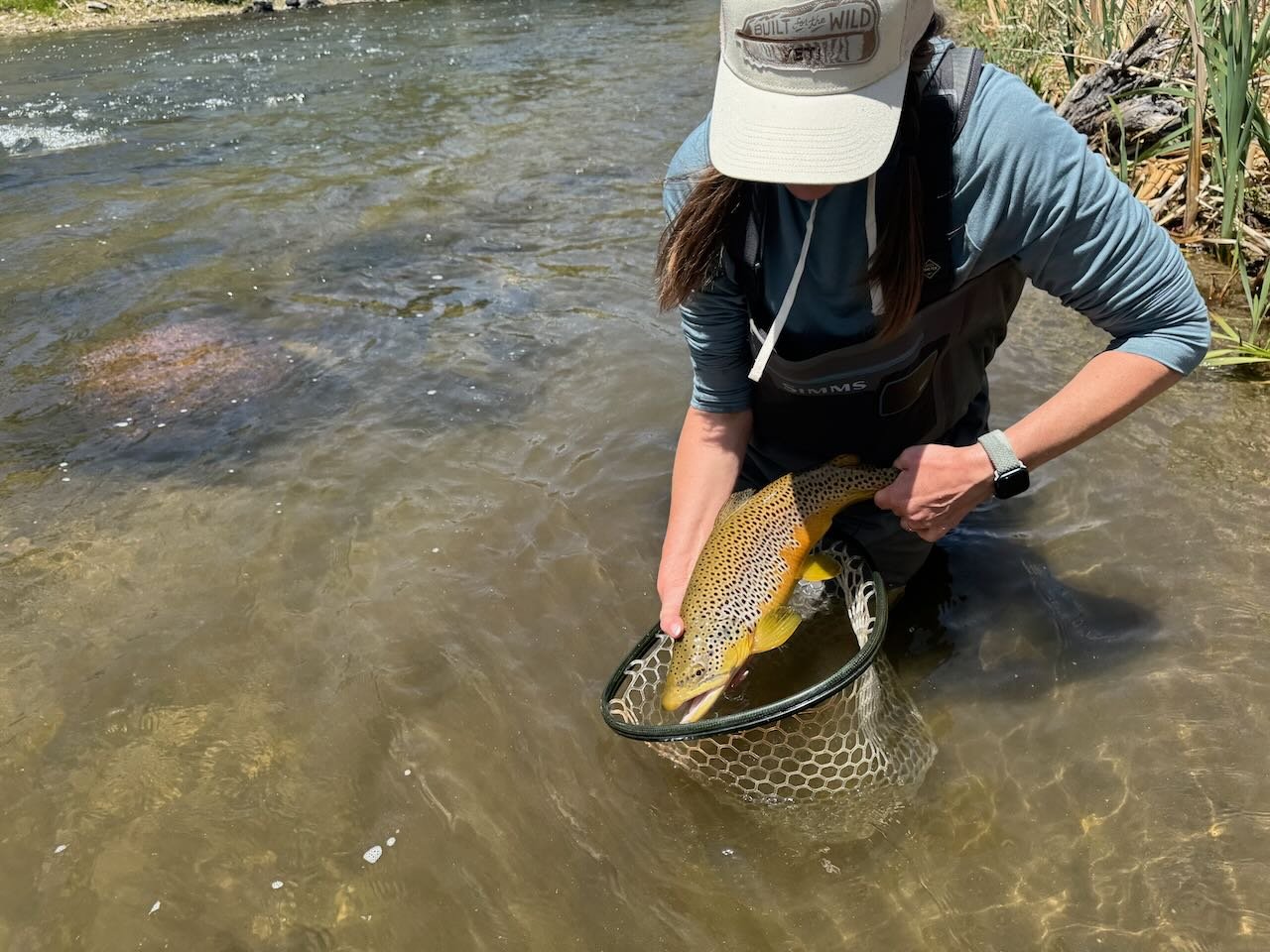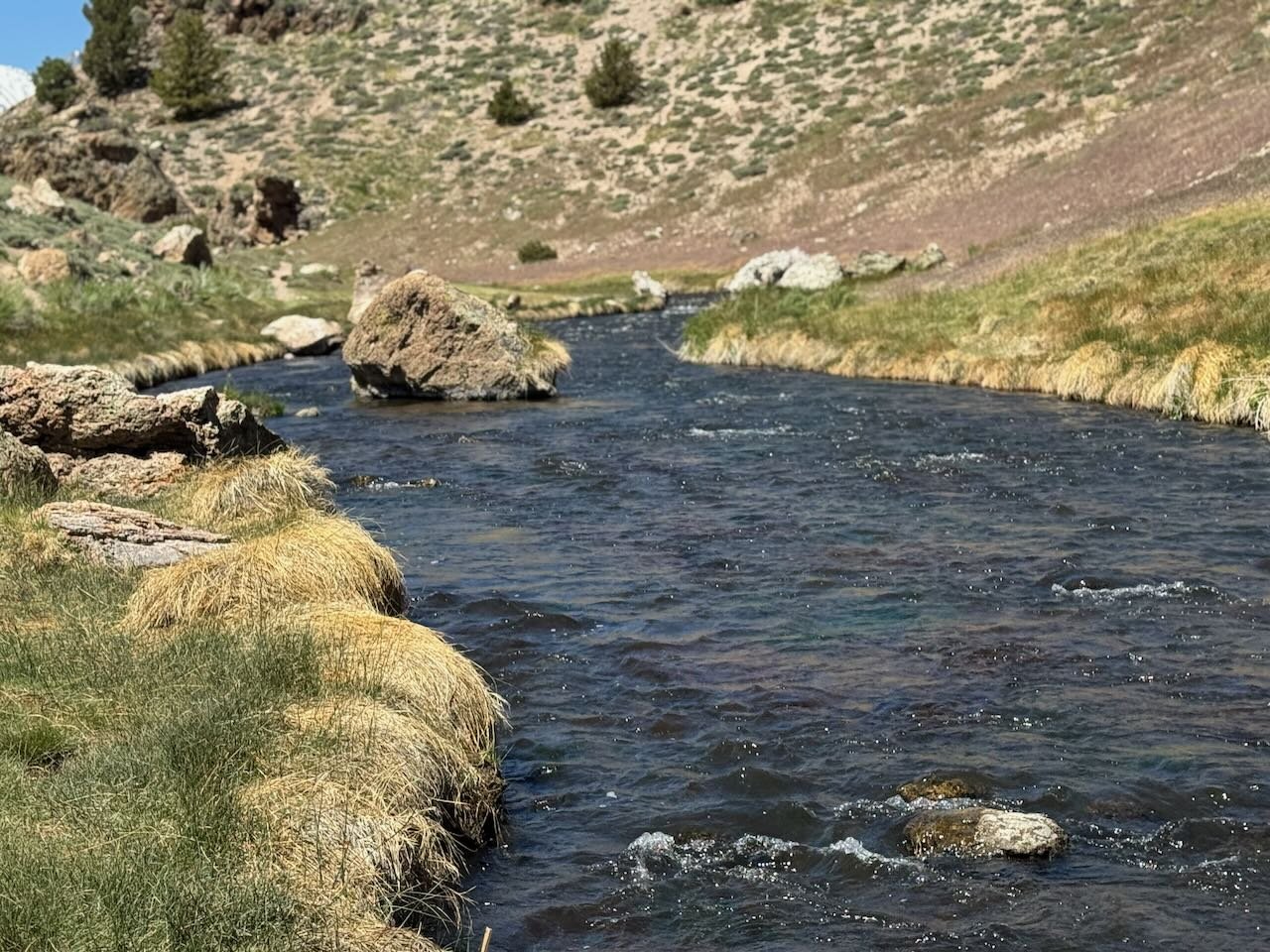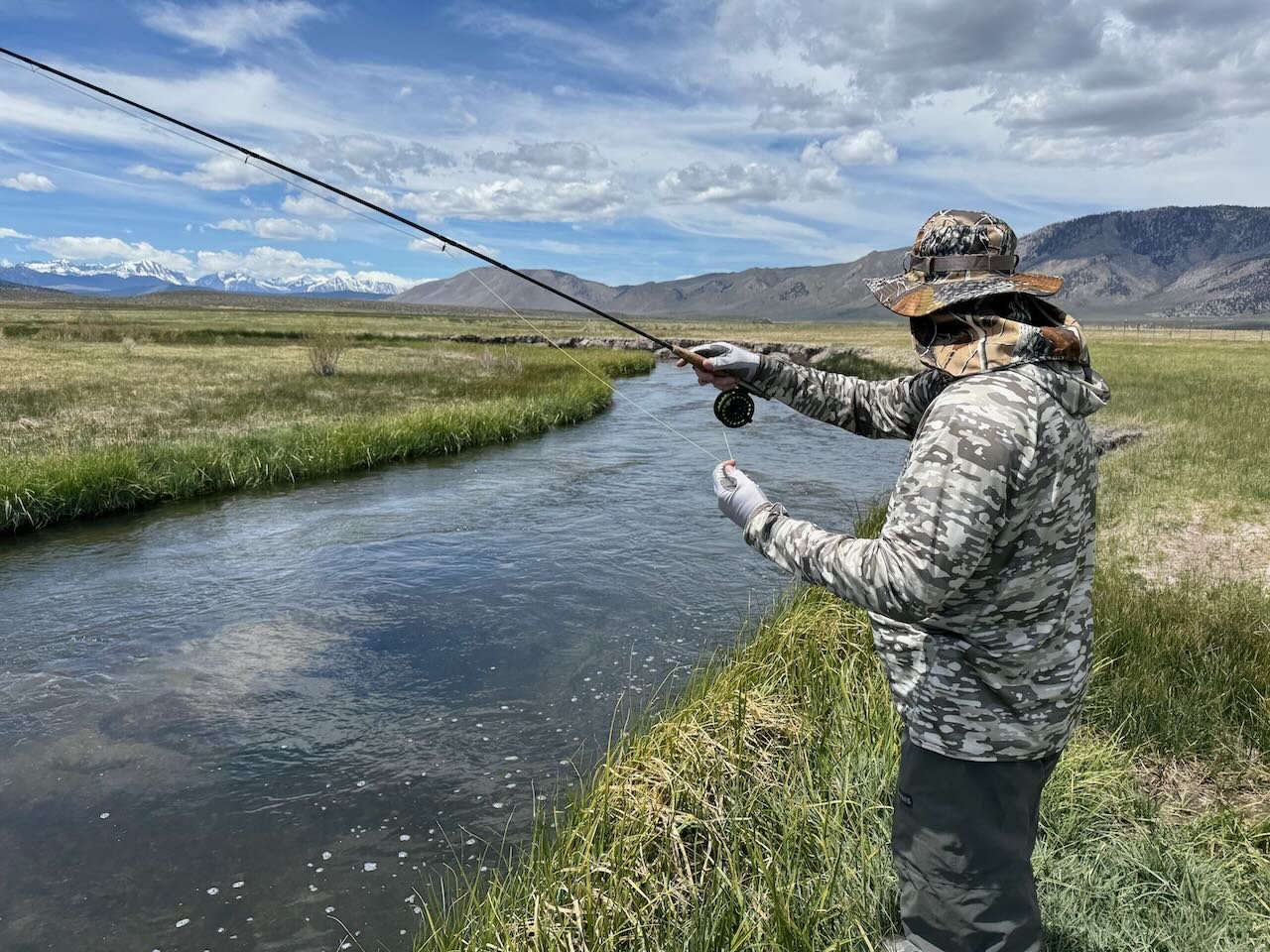With the warm weather comes the start of spring runoff. For a week or two streams, rivers and creeks will swell with the melting snow. Once night time temperatures are above freezing snow in the 10,000 foot level and above will be melting. The waters will be cold and dirty and it will slow down the fly fishing. Look for hatches of pale morning duns, little yellow stoneflies and caddis to start during June. No-see-ums and mosquitoes are starting to show up. Still waters and warm water fishes are great place to fish during spring runoff.
Summer is officially here on June 21, 2025 and will bring lots of dry fly opportunities on Eastern Sierra waters from Lone Pine to the Nevada border north of Bridgeport.
East Walker River:
Flows in the East Walker River have increased to 165 CFS. These are good flows for the East Walker River. With the higher flows expect dirty water flows. Fly fishing has been best on the days the river runs clear. Nymphing has been the most productive method of fly fishing the river. Euro nymph or indicator nymph with size 18 olive quilldigons, size 18 bead head flash back pheasant tail nymphs, size 16 bead head flash back gold ribbed hare’s ears, size 12 stoner nymphs, size 14 copper John’s and size 18 midges in zebra and tiger colorations. The larger trout in the East Walker are always looking for a high calorie meal provided by the fish and crawdads that inhabit the river. Fish with size 6 or 10 olive slumpbusters, size 6 or 10 olive matukas, size 10 olive balanced leeches, size 10 wooly buggers and size 10 marabou muddlers. Cast these flies quartered up stream and allow them to sink into the water column. When the fly line drags the flies across the stream be ready to set the hook. If you don’t get a hit when the fly drag across the stream, strip the streamer back to you and make another cast. Be sure to work your streamers around the obstacles in the stream where the trout like to hang out. Dead drift size 10 crawfish brown slumpbusters, size 10 Clouser nymphs and size 10 olive or brown poachers along the substrate where crawfish and Sculpin live.
Fishing with nymphs and streamers are producing wild brown trout in the East Walker River.
Owens River Gorge:
Owens River Gorge closed to public access for fish and wildlife habitat improvement from June 4th to 24th, 2025. No public access will be allowed within the Owens River Gorge from Long Valley Dam to the Control Gorge Power Plant. DWP will be performing a flushing flows event to fluff the stream bed. When the gorge reopens the weather will be hot, the stinging nettles will be in full growth and this is good rattle snake territory.
Owens River Gorge will be closed to fly fishing through June 24th.
Hot Creek
Interpretive Site:
Snow melt from the Mammoth Lakes basin increases flows in Hot Creek through flows in Mammoth Creek during spring runoff. Some days the hatches are strong enough to bring the trout to the surface. On the surface fish with size 20 blue wing olive parachutes, size 18 Adams parachutes, size 16 PMD parachutes, size 20 gray elk hair caddis, size 20 gray parachute caddis and size 20 gray X-caddis. Nymphing is productive on those days the hatches are not brining the trout to the surface. Nymph with size 18 olive quilldigons, size 18 bead head flash back pheasant tail nymphs, size 18 bead head flash back gold ribbed hare’s ears and midges in size 20 in tiger or zebra colorations.
Hot Creek is swollen slightly with runoff flows from Mammoth Creek and is offering good nymphing in the canyon section of the creek.
Hot Creek
Canyon Section:
Nymphing in the canyon section with an indicator or under a Euro rod is a very productive method of fly fishing during runoff. Cover all the water thoroughly. Be sure to cast your nymphs right along your bank directly above you. Nymph with a size 16 bead head flash back gold ribbed hare’s ear nymph, size 20 gray La Fontaines caddis emerger, size 18 Frenchie, size 18 bead head flash back pheasant tail nymph and size 18 olive quilldigon right on the substrate. Be sure your flies have enough weight to allow them to bounce slowly along the substrate or add split shot to your rig. During runoff is a great time to strip a size 6 olive wooly bugger around the obstacles in the river where the trout are resting out of the current. No-see-ums are biting in the hair line and in the hair.
Resident and juvenile trout of the upper Owens River are providing the action for fly fishers fishing with nymphs and dries.
Upper Owens River
Above Benton Crossing Bridge:
The trophy cutthroat season was not as concentrated as previous years and is pretty much done for the season. Fishing with size 12 stoner nymphs, size 12 green/gold wire Prince nymphs, size 14 copper John’s and size 12 gold ribbed hare’s ears variations in the deep pools, deep runs and cut banks are producing some 16 to 20 inch browns and rainbows. Nymphing with size 18 olive quilldigons, size 16 gold ribbed hare’s ears, size 18 bead head flash back pheasant tail nymphs and size 18 midge nymphs in blood, tiger and zebra colorations under an indicator or with a Euro rig is producing wild rainbows and browns to 12 inches. On the right days these trout will come to the surface for a size 16 elk hair caddis, size 18 blue wing olive parachute, size 16 pale morning dun parachute, and size 16 Adams parachute. With the warmer weather and flooded margins of the river it’s time to be carrying insect repellant to combat the attacking mosquitoes.
Nymphs and dry flies are producing wild and stocked trout in Bishop Creek Canal.
Bishop Creek Canal
Behind Bishop Veterinary Hospital:
With the warm weather it’s not pleasant fly fishing on the canal in the middle of the day. The trout are still taking nymphs fished under an indicator or with a Euro rig. The weed beds are will defined and working size 12 stoner nymphs, size 12 green/gold wire Prince nymphs, size 18 olive quilldigons, size 16 hot spot pheasant tail nymphs, size 16 SOS nymphs, size 18 Frenchie’s, size 18 bead head flash back pheasant tail nymph, size 18 olive quilldigon, size 16 bead head flash back gold ribbed hare’s ear and size 14 tan with dark olive back scuds are producing trout when fished on the sand between the weed beds. There are mayflies and caddis hatches bring trout to the surface. Fish with size 16 Adams parachutes, size 16 elk hair caddis and size 18 blue wing olive parachutes.






